In an Agile testing team, testers must closely collaborate with all other team members and with business stakeholders. This has a number of implications in terms of agile tester skills must have and the activities they perform within an Agile team. Agile Tester Skills A tester in an Agile team should be competent in test […]
Read MoreSome of the options while deciding the strategy for structuring of Agile Testing teams are as follows Testers Embedded into the Development Teams : Independent testers are often more effective at finding defects. In some Agile teams, developers create many of the tests in the form of automated tests. One or more agile testing engineer […]
Read MoreMany kinds of testing exist. Brian Marick came up with the Agile Testing Quadrant as shown below. In this diagram, he categorized tests according to whether they are business facing or technology facing and whether they support the development process or are used to critique the project. Q1-Technology Facing Tests that Support the Development Process […]
Read MoreA software system may be tested at different levels. Typical test levels are, from the base of the pyramid to the top, unit, integration, system, and acceptance. The test pyramid emphasizes having a large number of tests at the lower levels (bottom of the pyramid) and, as development moves to the upper levels, the number […]
Read MoreAgile projects often involve heavy use of automated tools to develop, test, and manage software development. Developers use tools for static analysis, unit testing, and code coverage. Developers continuously check the code and unit tests into a configuration management system, using automated build and test frameworks. These frameworks allow the continuous integration of new software […]
Read MoreManaging Regression Risk with Evolving Manual and Automated Test Cases In an Agile project, as each iteration completes, the product grows. Therefore, the scope of testing also increases. Along with testing the code changes made in the current iteration, testers also need to verify no regression risk has been introduced on features that were developed […]
Read MoreThe Differences between Testing in Traditional and Agile Approaches Testers must understand the differences between testing in traditional lifecycle models (e.g., sequential such as the V-model or iterative such as RUP) and Agile lifecycles in order to work effectively and efficiently. The Agile models differ in terms of the way testing and development activities are […]
Read More